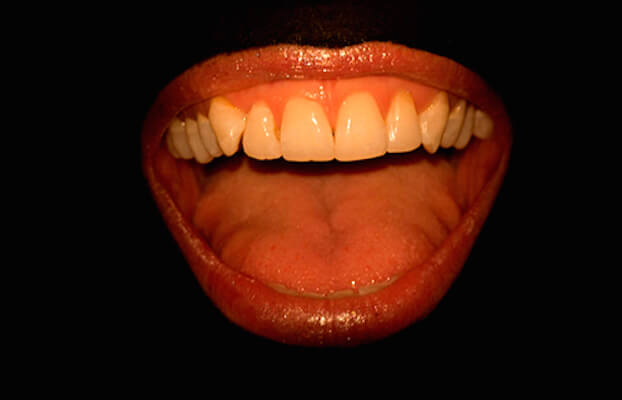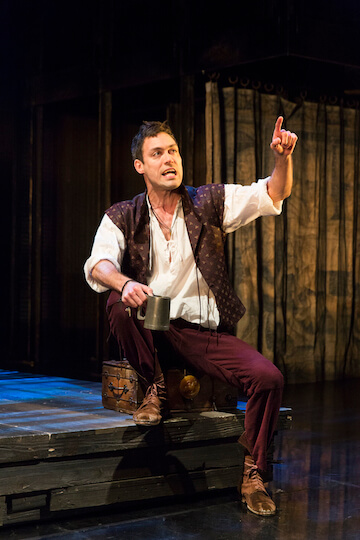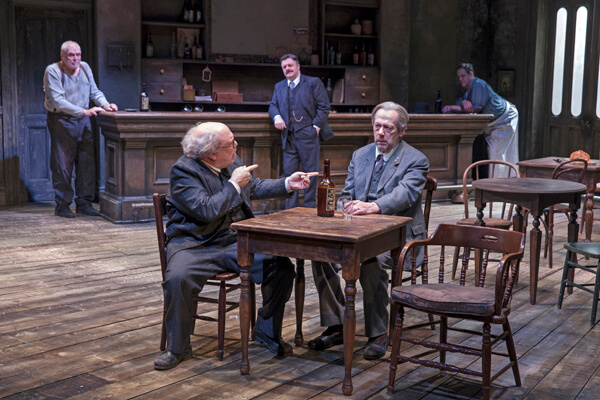BAM celebrated Benjamin Britten’s centenary (this past November 22) in lavish style by importing Glyndebourne’s production of his 1951 opera “Billy Budd,” adapted from the Herman Melville novel. Two of the opera’s creators, composer Britten and co- librettist E.M. Forster, were gay but the homoerotic elements are only indirectly suggested. The sense of repressed sexuality emerges more powerfully from this “closeted” angle.
Michael Grandage’s Glyndebourne staging was critically lauded at its 2010 premiere and successfully revived last summer. “Billy Budd” has been performed at the Metropolitan Opera since 1978 in a production by the late John Dexter considered by many to be definitive. It was fascinating to compare the differences between Grandage’s and Dexter’s take on the work and how Britten’s opera plays in the more human-sized dimensions of the BAM Howard Gilman Opera House. In Dexter’s production, William Dudley’s set exploits the huge expanse of the Met stage by setting the entire multilevel ship the H.S. Indomitable in a black existential void. In this vast setting, the characters seem lost on the cruel sea of fate, pawns of forces beyond their control.
“Billy Budd” in all its visceral intensity, humanity from Glyndebourne at BAM
For Glyndebourne’s intimate house, Christopher Oram designed a wooden framework hull that spans the height and width of the stage. It resembles a cage-like prison from which there is no escape or a huge wooden spider web with Claggart as the spider and Billy the succulent fly. That image is evoked in the first act curtain tableau after the old Dansker warns Billy that “Jemmy Legs is down on you,” with Claggart looming upstage center on the upper level while Billy stares out uneasily downstage below him.
There is no world visible beyond this ship and no heaven above looking down on its inhabitants. The characters’ moral and existential struggles are brought front and center as they fight for life in the belly of the beast. The sense of oppression and looming mutinous rebellion is palpable, the relative intimacy of the playing space heightening the intensity.
Glyndebourne rehearses productions for months and Grandage’s detailed direction has been polished over two summers of performances. Each theatrical and musical element was fully realized and came together as a total aesthetic experience. While the Metropolitan Opera has fielded some glamorous voices in the three leading roles over the years, the Glyndebourne performers were more modestly endowed but their total artistry and seamless ensemble work created a whole greater than the sum of the individual parts.
The most established name was veteran baroque tenor Mark Padmore (remembered from his appearances with William Christie’s Les Arts Florissants at BAM) in uncharacteristic repertory as the conflicted Captain Vere. Padmore has a firm warm tonal core in the middle register that projected Vere’s humanity while his control of softer dynamics suggested the captain’s sensitive, introspective side. Surprising power was summoned in more declamatory passages.
In the title role, South African Jacques Imbrailo’s modest slender baritone with its bright tenorial edge in the upper register movingly suggested Billy’s naïve boyish eagerness to please others. Less of a self-consciously glamorous matinee idol than some recent interpreters (no shirtless beefcake displays), Imbrailo’s sailor seemed more a real person rather than a symbol of beauty or goodness.
Brindley Sherratt’s bald-headed, gimlet-eyed John Claggart bore a striking resemblance to Donald Pleasence’s Blofeld in “You Only Live Twice.” His medium-sized black bass with its snarling insinuating edge had one color but exactly the right one for this character.
Peter Gijsbertsen as the ill-fated Novice has a fuller lyric tenor than we usually hear in this part. It was a nice touch having the angry crewmen turn on the informant Novice after Billy’s execution. Excellent supporting turns by Stephen Gadd as Mr. Redburn, the vibrant John Moore as Donald, burly Duncan Rock as the Novice’s Friend, and Jeremy White’s seen-it-all Dansker filled out a faultless all-male ensemble backed by the sonorous Glyndebourne Chorus.
Sir Mark Elder elicited swirling intensity out of the London Symphony Orchestra, its dramatic propulsion never flagging. Britten’s music too often merely provides cinematic underscoring to the action, but Elder understood every nuance and built up the sparer sections while fully gauging the breadth and beauty of the ensembles Britten’s score emerged more powerfully than I had ever heard it before while Melville’s struggle between good and evil had visceral dramatic impact.
BILLY BUDD | Brooklyn Academy of Music, Howard Gilman Opera House, 30 Lafayette Ave. at Ashland Pl. | Feb. 11 & 13 at 7:30 p.m. | $92-$150 at bam.org or 718-636-4100


































